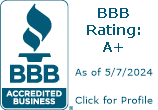Lead Clearance Inspector
LEAD
Final Cleanup Before Lead
Final cleanup generally involves painting and sealing of abated surfaces, including all floors (wheather abated or not), followed by a second HEPA/ wet wash/HEPA cycle, if necessary. Final cleanup should not begin until all hazard control work has been completed.
and after waiting at least one hour. In addition, a final visual inspection should not be conducted until at least one hour after final cleanup has been completed.
To ensure the effestiveness of the cleanup, the inspector has three responsibilities:
1. visual inspection
2. clearance test dusting
3. visual examination of soil ( or postabatement soil sampling (optional), if applicable.
Visual Inspection:
A visual inspection determines whether the work on all interior and exterior surfaces to be treated was in fact completed and to ensure that no visible settled dust or debris are present. The inspector should have access to any risk assessment or paint inspection reports as well as the job scope of work or specifications in order to determine the work was completed as specified.
Lead is a highly toxic metal that was used for many years in products found in and around our homes. Lead may cause a range of health effects, from behavioral problems and learning disabilities, to seizures and death. Children 6 years old and under are most at risk, because their bodies are growing quickly.
Research suggests that the primary sources of lead exposure for most children are:
- deteriorating lead-based paint,
- lead contaminated dust, and
- lead contaminated residential soil.
EPA is playing a major role in addressing these residential lead hazards. In 1978, there were nearly three to four million children with elevated blood lead levels in the United States. By 2002, that number had dropped to 310,000 kids, and it continues to decline. While we still have a significant challenge, EPA is very proud of how federal, state, tribal, and private sector partners have coordinated efforts with the public to better protect our children.
Since the 1980's, EPA and its federal partners have phased out lead in gasoline, reduced lead in drinking water, reduced lead in industrial air pollution, and banned or limited lead used in consumer products, including residential paint. States and municipalities have set up programs to identify and treat lead poisoned children and to rehabilitate deteriorated housing. Parents, too, have greatly helped to reduce lead exposures to their children by cleaning and maintaining homes, having their children's blood lead levels checked, and promoting proper nutrition. The Agency's Lead Awareness Program continues to work to protect human health and the environment against the dangers of lead by developing regulations, conducting research, and designing educational outreach efforts and materials.
This site provides information about lead, lead hazards, and provides some simple steps to protect your family. For basic information start with the links to the right. For more specific information, and to search for and download documents use the links on the left. You can speak to an information specialist by contacting
The National Lead Information Center (NLIC) at
1-800-424-LEAD (5323).



